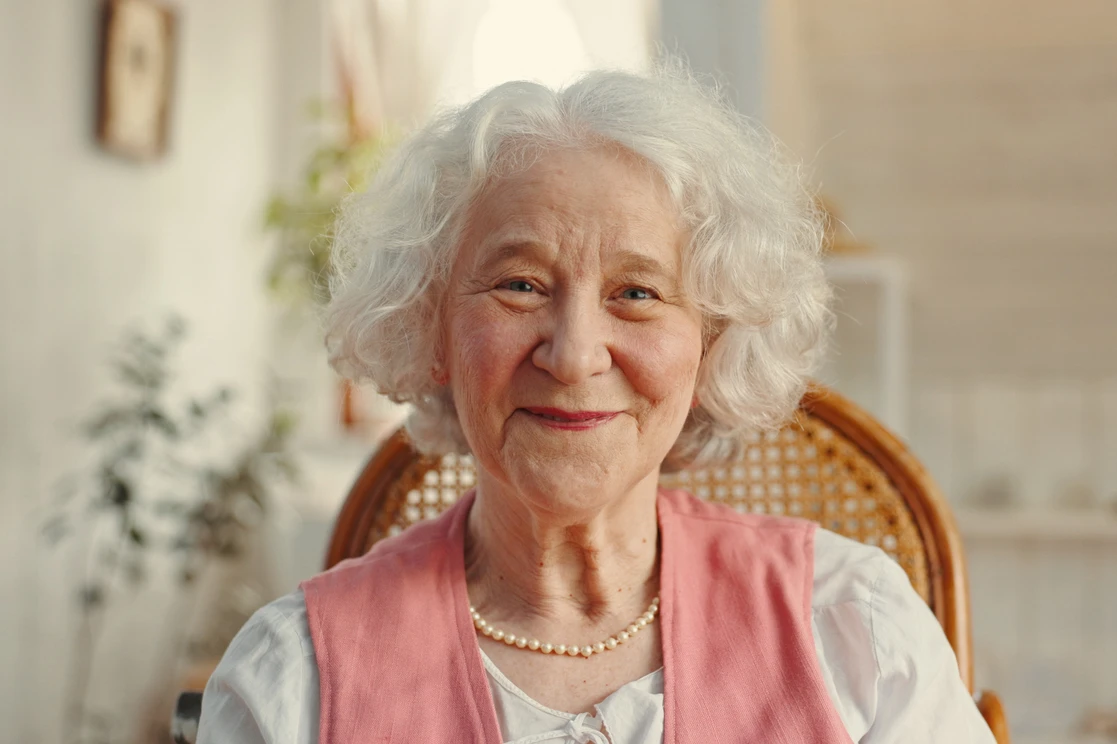
What Are Senior Living Apartments and Why They’re Transforming Retirement Living
Senior living apartments have become the gold standard for retirees seeking independence while having access to essential support services when needed. As the baby boomer generation continues to age, more families are exploring housing options that bridge the gap between complete independence and full-time care. The landscape of retirement living has evolved dramatically, offering sophisticated communities that feel more like upscale neighborhoods than institutional facilities.
Senior living apartments represent a revolutionary approach to retirement housing that has gained tremendous popularity over the past decade. Unlike traditional nursing homes or assisted living facilities, these communities focus on maintaining residents’ independence while providing a safety net of services and amenities. The concept emerged from recognizing that many seniors want to downsize their living space without downsizing their lifestyle or sacrificing their autonomy.
These apartment-style communities typically cater to adults aged 55 and older, though some accept residents as young as 50. The apartments themselves mirror standard rental units, complete with full kitchens, private bathrooms, and living spaces that residents can personalize with their own furniture and belongings. What sets them apart is the community infrastructure designed specifically for older adults, including accessible design features, social programming, and optional support services.
Understanding Different Types of Senior Housing Options
The senior housing market offers several distinct categories, each serving different needs and preferences. Independent living communities represent the most autonomous option, featuring private apartments with minimal support services. These communities focus primarily on social engagement and maintenance-free living, making them ideal for active seniors who don’t require daily assistance.
Assisted living bridges the gap between independence and skilled nursing care, offering personal care services like medication management, bathing assistance, and meal preparation. Many modern senior living apartments operate on a continuum of care model, allowing residents to age in place by transitioning between different levels of service as their needs change.
The Growing Demand for Independent Senior Communities
Demographics tell a compelling story about the future of senior housing. The U.S. Census Bureau projects that by 2030, all baby boomers will be 65 or older, creating an unprecedented demand for age-appropriate housing options. This generation brings different expectations than previous cohorts, seeking active lifestyles, technological integration, and flexible care options.
Today’s seniors are healthier and more active than previous generations, often continuing to work, travel, and pursue hobbies well into their 70s and beyond. This shift has driven the development of resort-style senior living apartments that feel more like country clubs than retirement homes. Communities now feature fitness centers, golf courses, art studios, and continuing education programs that appeal to residents’ diverse interests.
Essential Features to Look for in Quality Senior Living Apartments
Selecting the right senior living apartment requires careful evaluation of features that will impact your daily life and long-term satisfaction. The best communities seamlessly blend comfort, safety, and engaging amenities to create environments where residents genuinely want to live, not just where they need to be cared for.
When touring potential communities, pay attention to both the physical environment and the intangible atmosphere. High-quality senior living apartments feel welcoming and vibrant, with common areas that buzz with activity and residents who seem genuinely happy to be there.
Must-Have Amenities That Enhance Daily Living
Modern senior living apartments should offer amenities that support both independence and convenience. Look for communities with well-appointed fitness centers that feature equipment designed for older adults, including resistance machines, pools for low-impact exercise, and spaces for group fitness classes.
Library and computer centers remain popular, though many communities now offer Wi-Fi throughout the property and technology support to help residents stay connected with family and friends. Art studios, woodworking shops, and craft rooms cater to creative interests, while game rooms and lounges provide spaces for socializing and relaxation.
Modern Kitchen and Bathroom Accommodations
Even in communities with meal service, having a functional kitchen allows residents to maintain their cooking routines and dietary preferences. Look for apartments with full-size appliances, ample counter space, and storage for dishes and groceries. Energy-efficient appliances and easy-to-clean surfaces make daily tasks more manageable.
Bathrooms should feature safety elements, such as grab bars, non-slip flooring, and walk-in or roll-in showers with low thresholds. Good lighting and accessible storage help residents maintain their grooming routines independently.
Safety Features and Emergency Response Systems
Personal emergency response systems should be standard in every apartment, allowing residents to summon help quickly if needed. These systems have evolved beyond basic pendants to include fall detection technology and smart home integration that can monitor daily activity patterns.
Security features should include controlled building access, well-lit pathways, and 24-hour staffing. Many communities now use key fob systems that track entry and exit, providing an additional safety layer for residents with cognitive concerns or family members who want peace of mind.
Healthcare and Wellness Support Services
While senior living apartments emphasize independence, having healthcare support readily available provides peace of mind for residents and their families. The level of health services varies significantly between communities, so it’s important to understand what’s available and what additional services can be accessed as needs change.
Many communities employ wellness coordinators or nurses who can provide basic health monitoring, medication reminders, and coordination with external healthcare providers. These professionals often serve as liaisons between residents and their doctors, helping manage complex medical situations.
How to Choose the Perfect Senior Living Apartment for Your Needs
Selecting the ideal senior living apartment requires honest self-assessment combined with thorough research and community visits. The decision involves balancing current preferences with future needs, financial considerations with lifestyle desires, and practical requirements with emotional factors.
Start by creating a clear picture of your ideal retirement lifestyle. Reflect on how you currently spend your time and identify the activities that bring you joy and fulfillment. Consider the level of social interaction you prefer and the types of amenities that would enhance your daily life.
Evaluating Your Current and Future Care Requirements
An honest assessment of your current health status and potential future needs helps ensure you select a community that can support you long-term. Consider not only your physical health, but also your mental and emotional well-being, social needs, and any family history that may indicate future health challenges.
Many families make the mistake of waiting until a health crisis forces them to make a quick decision about senior living. Planning while you’re healthy allows for thoughtful consideration of options and a smoother transition when the time comes to move.
Location Factors That Matter Most
Geographic location has a significant impact on both daily life and long-term satisfaction with your chosen community. Consider factors beyond just climate and scenery, including proximity to important people and services, variations in cost of living, and cultural amenities that align with your interests.
The location decision often involves trade-offs between staying near family and friends versus moving to a more desirable climate or lower-cost area. There’s no universally right answer, but understanding your priorities helps guide this important choice.
Financial Planning and Budgeting Strategies
The financial aspects of senior living require careful planning and often involve complex decisions about how to structure payments and manage long-term care costs. Understanding the full scope of expenses helps prevent financial surprises and ensures you can afford your chosen lifestyle throughout retirement.
Senior living apartments typically operate on monthly fee structures, but the specifics vary widely between communities and geographic regions. Some communities charge all-inclusive fees that cover everything from housing to meals and activities, while others use a base rent plus optional services model.
The Benefits of Choosing Senior Living Apartments Over Other Housing Options
Senior living apartments offer distinct advantages that make them increasingly popular among today’s retirees. These benefits extend beyond simple housing to encompass lifestyle enhancement, health and safety improvements, and peace of mind for both residents and their families.
The comprehensive approach of quality senior living apartments addresses multiple aspects of successful aging simultaneously. Rather than requiring residents and families to coordinate various services from different providers, these communities offer integrated solutions that simplify life while enhancing quality and safety.
Loneliness and social isolation represent significant health risks for older adults, contributing to depression, cognitive decline, and physical health problems. Senior living apartments combat isolation by creating built-in opportunities for social interaction and meaningful relationships with peers who share similar life experiences and interests.
Home ownership responsibilities can become overwhelming as we age, particularly for those dealing with health challenges or mobility limitations. Senior living apartments eliminate the burden of home maintenance, lawn care, snow removal, and home repairs, allowing residents to focus their time and energy on activities they enjoy.
Professional management and maintenance staff ensure that living environments remain safe, functional, and attractive. Issues get addressed promptly by qualified professionals, eliminating the need for residents to research service providers or worry about being taken advantage of by unscrupulous contractors.
Ready to discover the exceptional lifestyle waiting for you at a premier senior living community?
The Artesian of Ojai exemplifies everything you should look for in quality senior living apartments, combining elegant independent living with personalized care options in the breathtaking Ojai Valley. Located at 203 E El Roblar Dr, Ojai, CA 93023, our community offers both assisted living and specialized memory care services designed to support you as your needs evolve. Call us today at (805) 798-9305 to schedule your personalized tour and experience firsthand the warmth, vitality, and peace of mind our community provides. You can also reach us via email at info@theartesianseniorliving.com to learn more about our lifestyle options, floor plans, and current availability. Licensed under RCFE# 567609954, The Artesian of Ojai represents the pinnacle of senior living excellence in California’s beautiful Ojai Valley.
Frequently Asked Questions
1. How much does it cost to live in senior apartments?
Senior living apartment costs vary widely based on location, level of services, and apartment size. Monthly fees typically range from $2,000 to $6,000 or more, with luxury communities commanding premium prices. Entry fees, where applicable, can range from a few thousand dollars to several hundred thousand dollars.
2. What is the most affordable way for a senior to live?
The most affordable senior living options typically include subsidized senior housing, shared housing arrangements, or aging in place with home-based services. However, the cheapest option isn’t always the best value when you consider quality of life, safety, and access to appropriate care.
3. Does Medicare pay for senior living facilities?
Medicare generally does not cover the cost of housing in senior living apartments or assisted living facilities, as these are considered custodial care rather than skilled medical care. However, Medicare may cover specific medical services provided within senior communities.
4. What is the age limit for senior living apartments?
Most senior living apartments require residents to be at least 55 or 62 years old, though age requirements vary by community. Some communities accept residents as young as 50, while others set the minimum age at 65.
5. What’s the difference between senior apartments and assisted living?
Senior apartments typically offer independent living with minimal support services, focusing primarily on maintenance-free housing and social activities. Assisted living provides personal care services, such as medication management, bathing assistance, and meal services, for residents who require assistance with daily activities.
6. Can I bring my pets to senior living apartments?
Many senior living apartments welcome pets, recognizing the important role they play in residents’ emotional well-being. Pet policies vary by community and may include restrictions on size, breed, or number of pets.
7. How do I know when it’s time to move to a senior living community?
Signs that it might be time to consider senior living apartments include difficulty maintaining your current home, social isolation, concerns about safety or security, or challenges with transportation. The best time to explore options is before you have an urgent need to move.
Key Takeaways
- Choosing senior living apartments represents a significant life decision that requires careful consideration of multiple factors. The most successful transitions occur when families take time to thoroughly research options, visit multiple communities, and honestly assess current and future needs.
- The senior housing industry has evolved dramatically to offer sophisticated communities that support active, engaging lifestyles rather than simply providing custodial care. Today’s senior living apartments focus on enhancing quality of life while providing appropriate support services when needed.
- Location considerations should balance proximity to family and healthcare with climate preferences and cost of living factors. The right location varies for each individual based on personal priorities and circumstances. Financial planning requires understanding both upfront costs and ongoing expenses, as well as exploring insurance coverage and benefit programs that may help offset costs.
- Community atmosphere and culture significantly impact resident satisfaction and should align with personal values and lifestyle preferences. The best senior living apartments feel like welcoming neighborhoods where residents genuinely want to live, not just places where they receive care.





